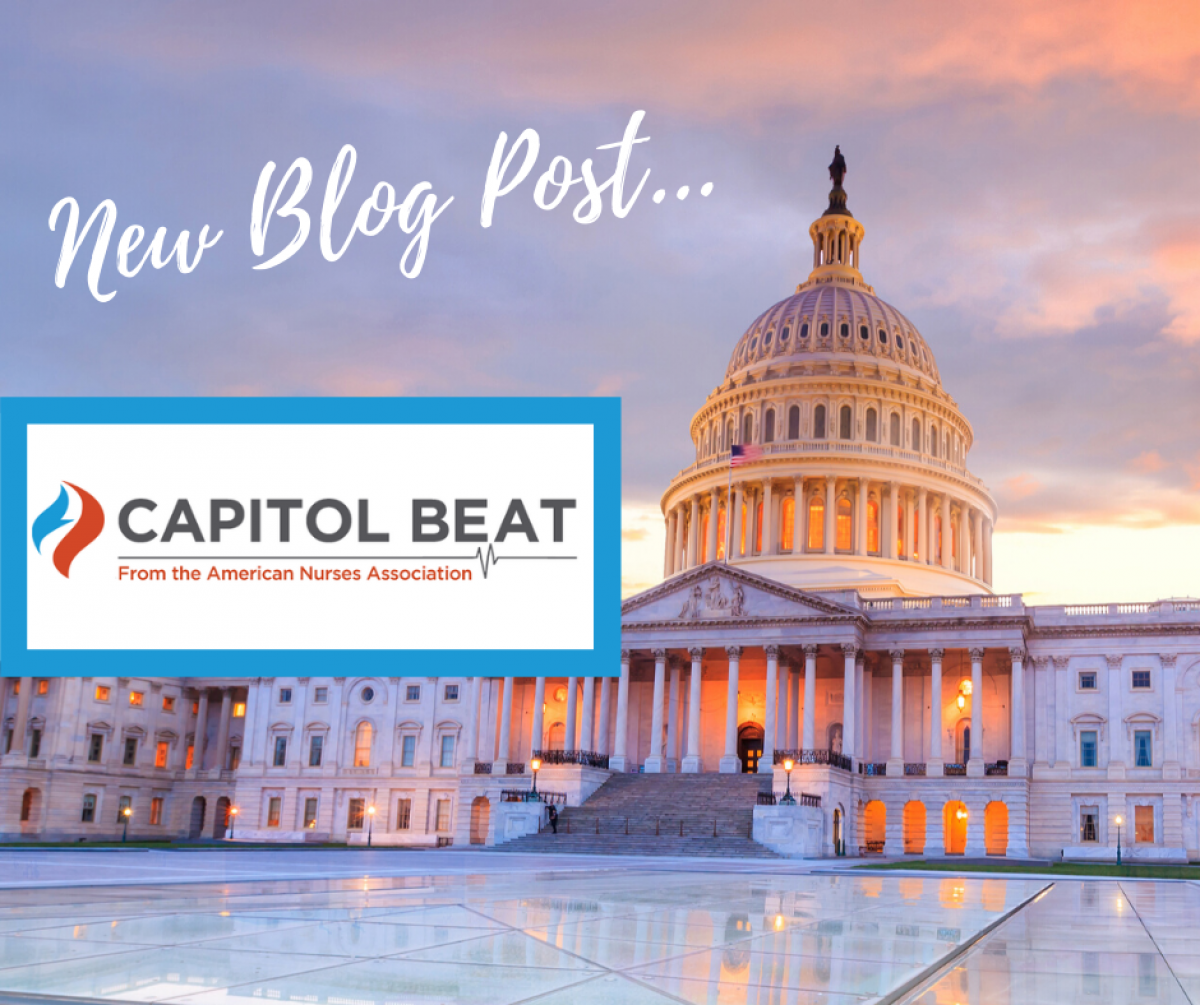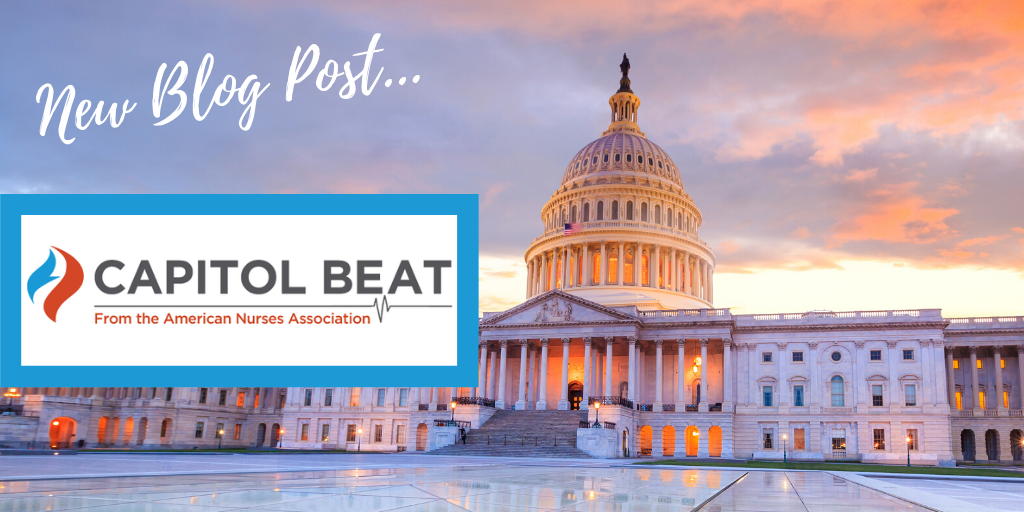Below is ANA’s legislative breakdown of the nursing provisions included in the $1.5 trillion omnibus appropriations bill that will fund the Federal government through the end of the current fiscal year. The bill, which also includes Ukraine emergency spending attached, was signed into law on March 15, 2022.
Nursing
Title VIII Nursing Workforce Development programs received $280.472 million, which is a $16 million increase over Fiscal Year 2021.
National Institute of Nursing Research received $180.862 million, which is a $5.905 million increase over FY enacted levels.
Sexual Assault Nurse Examiners Program – The bill includes $13 million, an increase of $4 million within the total for Advanced Education Nursing to expand training and certification of RNs, APRNs, and Forensic Nurses to practice as sexual assault nurse examiners.
RN Shortage – The bill includes $4.750 million within the Nurse Education, Practice, Quality, and Retention to address the shortage of RNs. The agreement directs Health Resources Service Administration (HRSA) to give priority in new funding announcements to public entities for training of additional RNs, specifically for acute care settings. In addition, it directs HRSA to give priority to applicants in States listed in the HRSA publication “Supply and Demand Projections of the Nursing Workforce 2014-2030” as having the greatest shortages.
Nurse Practitioner Optional Fellowship Program – The agreement includes $6 million for this program.
Impact of COVID-19 on the Rural Nursing Workforce – This agreement directs HRSA to submit a report within one year of enactment on the impact of the current public health emergency on the nursing workforce, especially in rural areas, and summarize strategies to mitigate and address these impacts.
Nursing and Allied Health Workforce Shortages – The Committee notes that in a March 2021 survey conducted by the HHS Office of the Inspector General, hospitals reported that nursing shortages during the COVID–19 pandemic significantly strained health care delivery and were a significant obstacle to addressing the public health emergency. The survey found that these shortages exacerbated longstanding challenges in health care delivery, access to care, and health outcomes. The Committee requests a report within 180 days of enactment of this Act addressing the role of Medicare funding in supporting the training of nursing and allied health professionals. Such report should also include an assessment of how CMS can exercise its discretion under existing payment rules to further address shortfalls in the nursing and allied health workforce.
Department of Veterans Affairs Nurse and Physician Assistant Retention and Income Security Enhancement Act (VA Nurse and PA Raise Act) – This will lift the salary caps at the U.S. Department of Veterans Affairs (VA) for APRNs and PAs.
Telehealth
The legislation includes provisions to extend and expand telehealth flexibilities for 151 days after the end of the COVID-19 public health emergency. Provisions of note include:
- Expanding originating site to include any site at which the patient is located, including the patient’s home;
- Extending the ability for federally qualified health centers (FQHCs) and rural health clinics (RHCs) to furnish telehealth services;
- Delaying the six month in-person requirement for mental health services furnished through telehealth until 152 days after the emergency, including the in-person requirements for FQHCs and RHCs;
- Extending the coverage and payment for audio only telehealth services;
- Extending the ability to use telehealth services to meet the face-to-face recertification requirement for hospice care;
- Requiring the Medicare Payment Advisory Commission to conduct a study on the expansion of telehealth services and to require the Department of Health and Human Services (HHS) Secretary to publicly post data with respect to telemedicine utilization.
Maternal Health
The Maternal Health Quality Improvement Act would provide for Public Health Service Act grants to develop and disseminate best practices with authorization of $45 million for 2023-2027; accredit health professional schools to train health care professionals about perceptions and biases with authorization of $15 million for 2023-2027; support states and tribal organizations for integrated health care services with authorization of $50 million for 2023-2027; and instruct HHS to include pregnant and postpartum women as part of their public awareness campaign.
The Improving Rural Maternal and Obstetric Care Data which would amend the Public Health Service Act to improve rural maternal and obstetric care data collection and care networks with authorization of $15 million for 2023-2027, as well as establishes grants to support health care professional training and telehealth resources with authorization of $25 million for 2023-2027.
Agencies
Health and Human Services: $108.3 billion in total spending, an increase of $11.3 billion. As part of this appropriation, Congress would establish and/or fund the following agencies, among others:
Centers for Medicare & Medicaid Services: $4 billion in total spending, an increase of $50 million.
Advanced Research Projects Agency for Health (ARPA-H): $1 billion to establish ARPA-H with the intent of accelerating the development of scientific breakthroughs for diseases such as ALS, Alzheimer’s disease, diabetes and cancer.
National Institutes of Health: $45 billion, an increase of $2.25 billion with a particular focus on investments in research to address cancer, HIV and dementia, among other conditions.
Centers for Disease Control and Prevention: $8.5 billion, an increase of $582 million, with a particular emphasis on improving the nation’s public health infrastructure, including data collection and monitoring.
Substance Abuse and Mental Health Services Administration: $6.5 billion, an increase of $530 million to invest in a number of mental health programs, including those particularly targeted at children and youth.
Health Resources and Services Administration: $8.9 billion, an increase of $1.4 billion, to improve access to care in underserved communities, develop the workforce, and improve maternal and child health outcomes.
Food and Drug Administration: $3.3 billion, representing an increase of $102 million with new investments to address the opioid crisis, improve medical supply chain surveillance, facilitate the development of treatments for rare cancers and accelerate medical product development as authorized in the 21st Century Cures Act.
Federal Emergency Management Agency: $23.9 billion, representing an increase of $2.19 billion with a particular focus on disaster response and recovery efforts.
Explanatory Statements
From L-HHS-ED Explanatory Statement:
Experiential learning Opportunities – Within the total for Nurse Education, Practice, Quality, and Retention, the agreement includes $5,750,000, an increase of $2,750,000, to expand competitive grants to enhance nurse education through the expansion of experiential learning opportunities as directed in P .L. 116-260.
Mental and Substance Use Disorder Workforce Training Demonstration – Within the total for BHWET, the agreement includes $31,700,000 for this program. The agreement continues support for grants to expand the number of nurse practitioners, physician assistants, health service psychologists, and social workers trained to provide mental and substance use disorder services in underserved community-based settings as authorized under section 760 of the PHS Act.
Substance Use Disorder Treatment and Recovery (STAR) Loan Repayment Program – Within the total for BHWET, the agreement includes $24,000,000 for this program.
Opioid Prescribing Guidelines – The agreement applauds CDC’s February 2022 Updated Clinical Practice Guideline for Prescribing Opioids for Chronic Pain, for use by primary care clinicians for chronic pain in outpatient settings outside of active cancer treatment, palliative care, and end-of-life care. The agreement directs CDC to continue its work educating patients and providers, and to encourage uptake and use of the Guidelines. The agreement urges CDC to continue coordination with other Federal agencies in implementation and related updates in safe prescribing practices to ensure consistent, high-quality care standards across the Federal government.
Replenishing Personal Protective Equipment (PPE) – The agreement notes with concern the emergence of counterfeit PPE products in the U.S. healthcare system and the critical need to boost domestic PPE manufacturing. The agreement urges the Secretary to develop a long-term sustainable procurement plan that gives preference to and results in purchases from domestic manufacturers of PPE and PPE raw materials.
From Mil Con-VA Explanatory Statement:
Annual Staffing Report -The Committees appreciate the Department’s efforts to provide useful information regarding its staffing challenges. Building off of the directive included in the Joint Explanatory Statement accompanying Public Law 116-260, the Committees direct the Veterans Health Administration to provide no later than January 31 of each calendar year, beginning in January 2023, a comprehensive report on: 1) staffing shortages generally; 2) staffing needs in rural and remote areas; 3) staffing needs for women’s health providers; 4) the development, use, and refinement of credentialing and staffing models; and 5) its plans to address these workforce issues. The Committees encourage the Department to focus on annually identified occupational shortages, but note that it may from time-to-time request information regarding specific types of shortages, such as mental health providers. As such, the Department is requested to track professions and specialties of interest.
If you have any questions regarding the summary, please feel free to reach out to us at rnaction@ana.org.
Samuel Hewitt, Associate Director of Policy and Government Affairs, is a co-author and contributor of this article.



